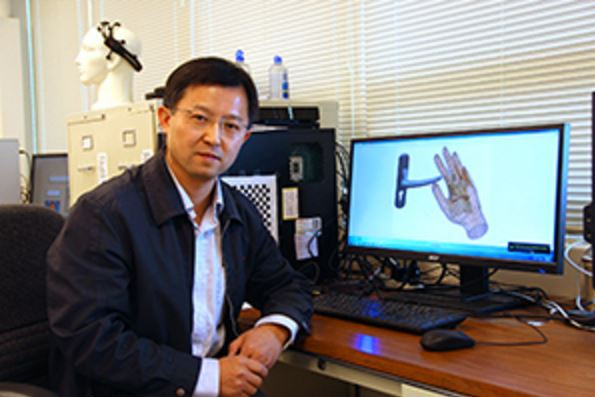Robotic glove featuring sensors helps blind to recognise objects

Scientists are developing a robotic glove that bundles an array of sensors to assist the blind with the ability to identify an object's location, pre-sense and then grasp it. Jointly developed by the University of Nevada, Reno and the University of Arkansas, Little Rock, the device bundles new technologies that are absent in currently available assistive devices.
Yantao Shen, assistant professor and lead researcher of the project from the University of Nevada, Reno's College of Engineering, said the wearable robotic, along with helping the visually impaired, will have scores of potential applications such as in space exploration, military surveillance, law enforcement and search and rescue. The glove packs vision, tactile, force, temperature and audio sensors and actuators.
"The miniaturised system will contribute to the lives of visually impaired people by enabling them to identify and move objects, both for navigational purposes or for more simple things such as grasping a door handle or picking up a glass. We will pre-map the hand, and build a lightweight form-fitting device that attaches to the hand using key locations for cameras and mechanical and electrical sensors. It will be simpler than a glove, and less obtrusive," said Yantao Shen.
How does the robotic glove work?
The visual sensor and high-resolution cameras in the wearable robotic device will first notify the wearer of the location and shape. The proximity touch sensor will then start its action as the hand reaches for the object. The multiple sensors and touch actuator will describe the shape of the object when the hand is close to the object.
"This is a major nationally competitive project that will result in cutting-edge research. It is a big success for Dr Shen and a clear evidence of the continuous growth of our biomedical engineering and autonomous systems programs, which have become major areas of focus for the College of Engineering," added Manos Maragakis, dean of the College of Engineering.
© Copyright IBTimes 2025. All rights reserved.





















